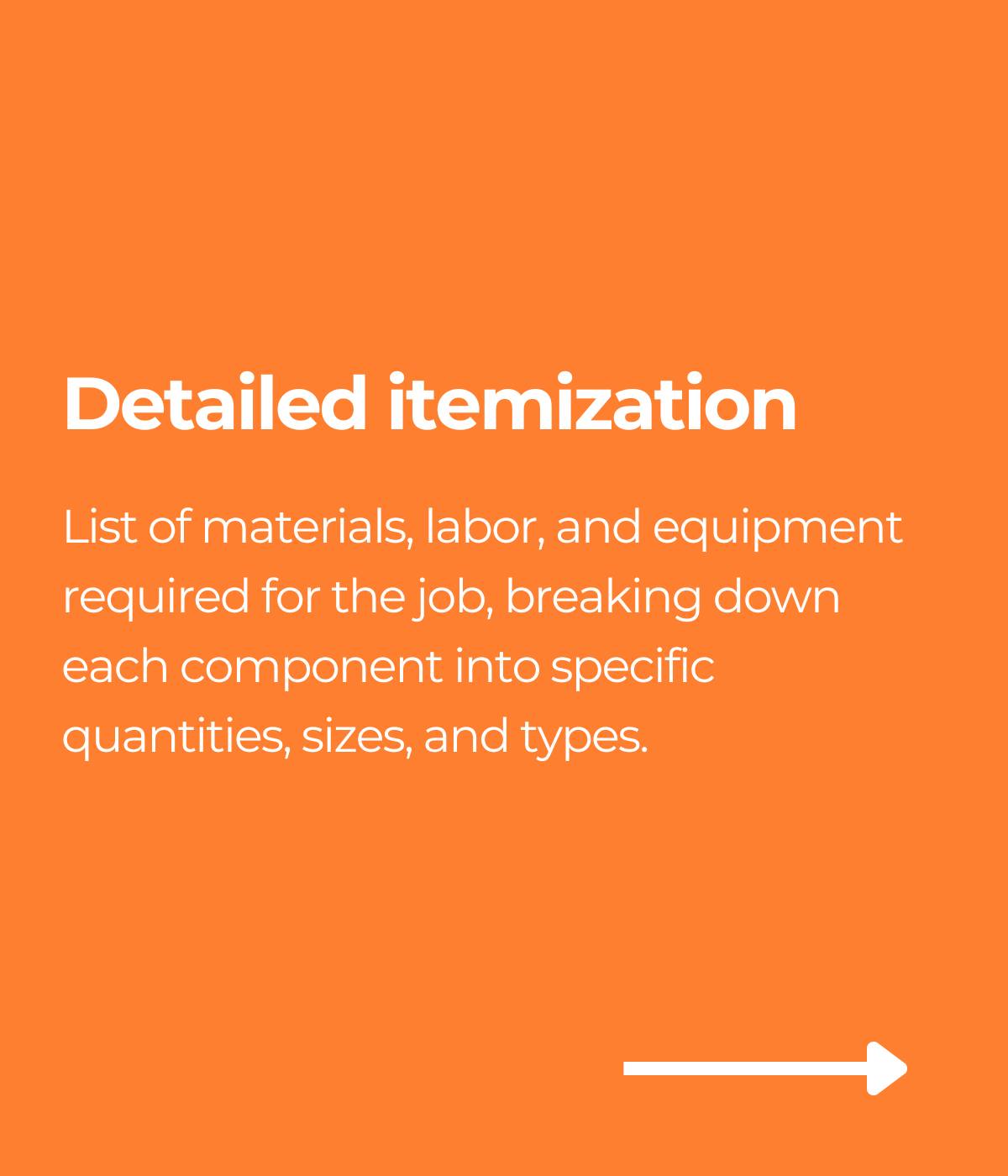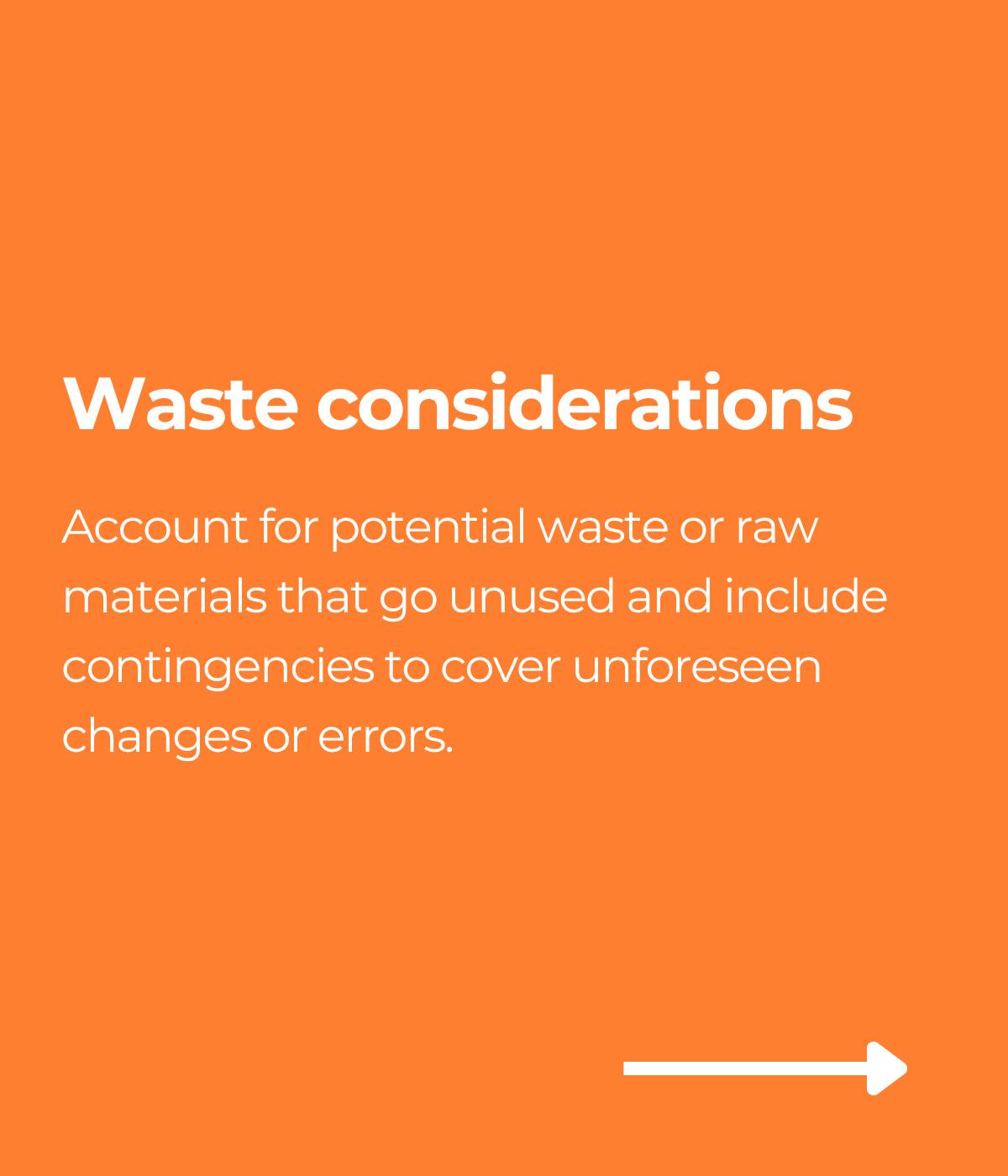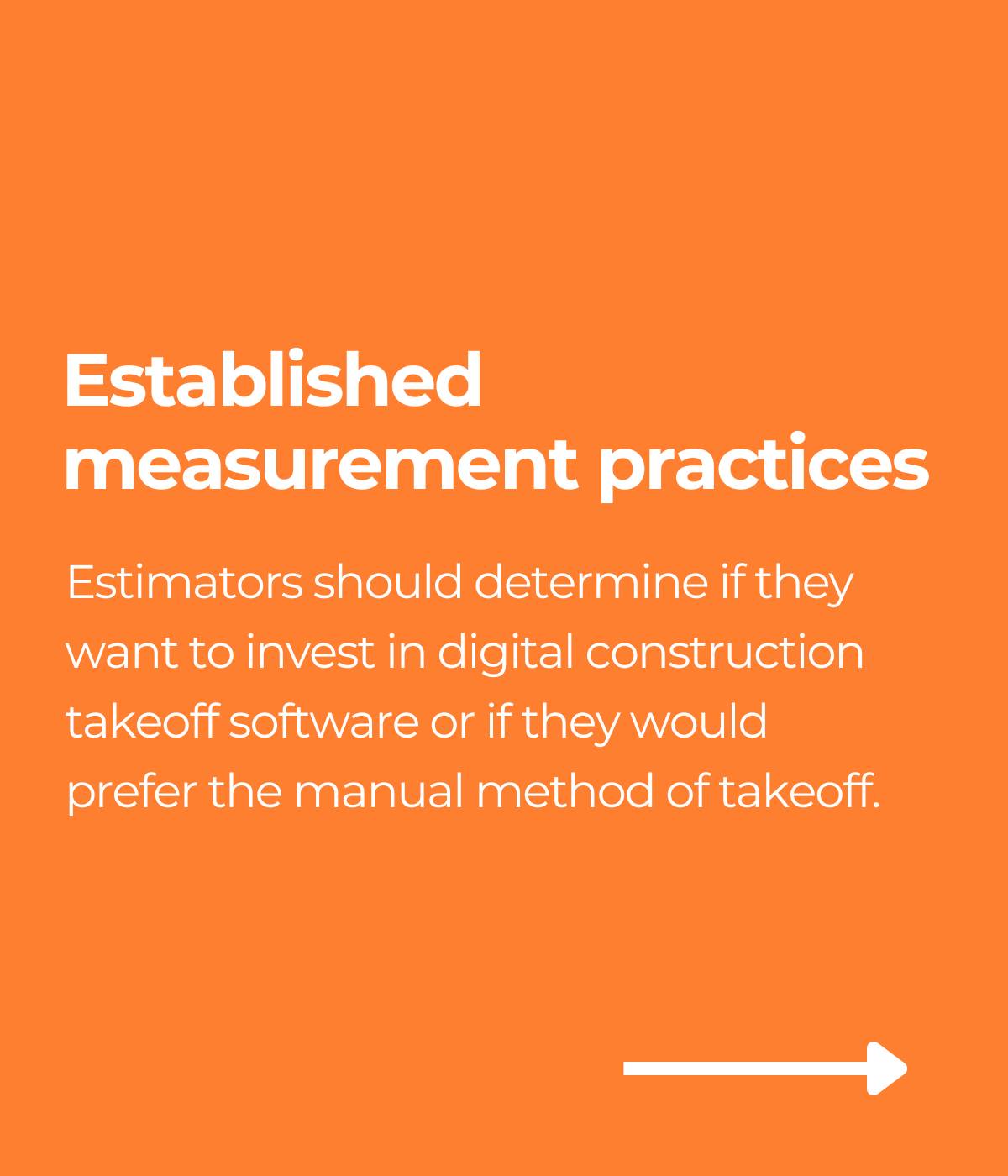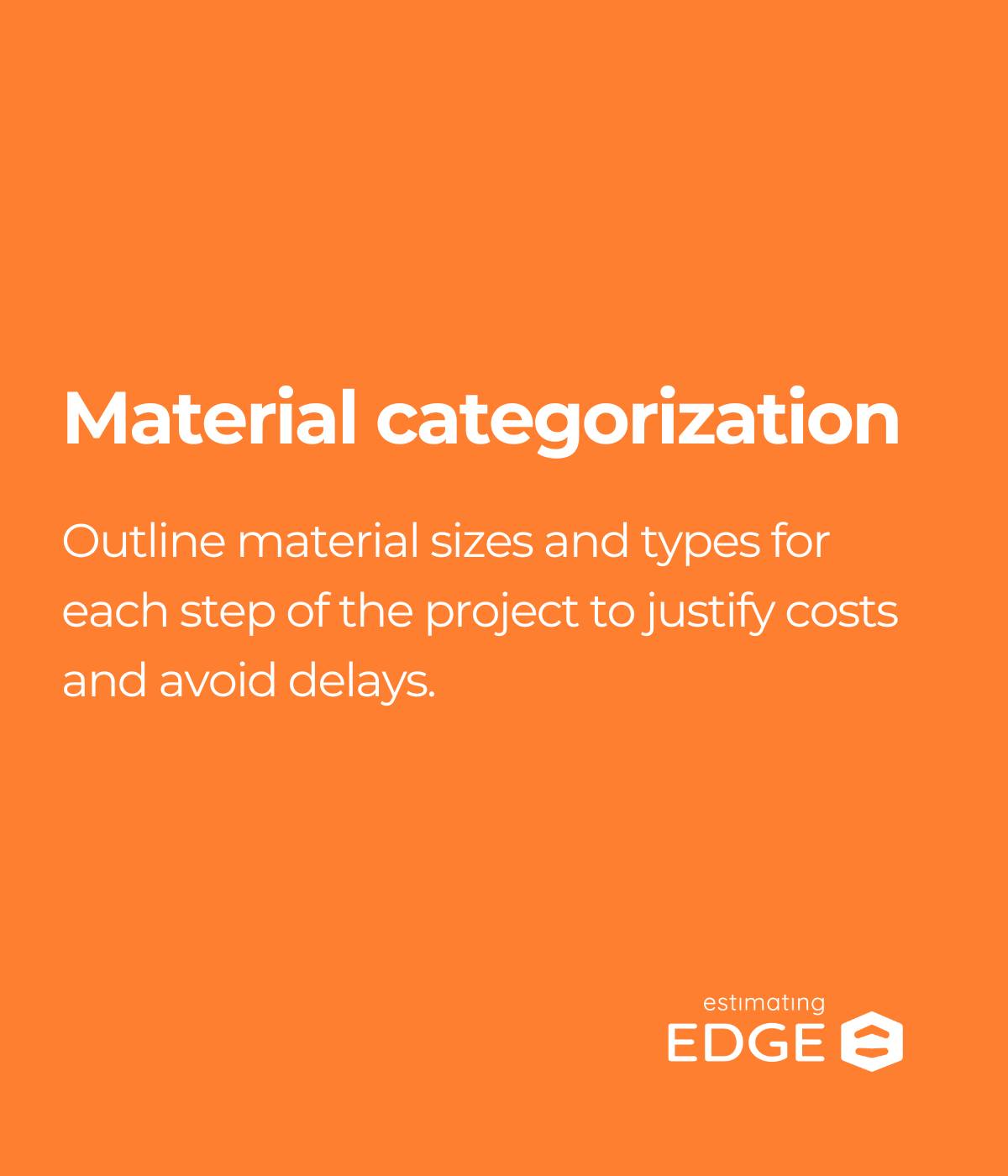
Construction takeoff is a fundamental step in the estimating process. It determines the number of materials needed for the construction project based on blueprints and specifications.
Accurate quantity takeoff leads to precise estimates and helps contractors mitigate unexpected costs, specifically by avoiding over or under-ordering different materials.
Overall, a precise, accurate takeoff determines the effectiveness of cost estimating and is paramount to the success of any project.
Key Takeaways
- Construction takeoff, estimating and bids are directly connected to each other. Construction takeoff is the process of quantifying the material, labor and equipment needs of a project. It serves as the basis for estimates and bids and helps contractors know the construction costs.
- A good takeoff in construction involves attention to detail, precise measurements, detailed itemization, contingency considerations and thorough documentation.
- Construction quantity takeoffs are critical for accurate estimating. Good takeoff involves attention to detail, precise measurements, detailed itemization, contingency considerations and thorough documentation. An accurate takeoff streamlines the entire construction process.
- Estimators should invest in estimating software with built-in takeoff. With these digital takeoff tools, they can automatically update quantities and costs to avoid double entry and limit human error.
- The EDGE® is a leading construction estimating software with built-in takeoff that’s designed to handle the challenges of the roofing, interior finishing and exterior finishing trades.





How are Construction Takeoffs, Estimates and Construction Bids Connected?
In the construction industry, estimators need to understand the differences between takeoff, estimates and bids to create effective processes for each to win more jobs while maximizing profitability.
- Takeoff is the process of quantifying, or counting, material, labor and equipment needs for a project. It occurs before the estimate.
- Estimates add the material costs to the quantities and provide a detailed breakdown of the total expenses based on the takeoff.
- Bids are comprehensive proposals that feature project costs from the estimate. Contractors submit the bid to project owners to demonstrate why they’re the best choice for the job.
Material takeoffs and estimates are directly linked to each other. The measurements provided by the takeoff are used to create accurate estimates that highlight the total costs of the project.
This information is then compiled within a bid and submitted to the project owner.
Takeoff sets the tone for the rest of the project.
What are Some of the Challenges of the Construction Takeoff Process?
The margin between success and failure in estimating can be razor-thin. Project owners will be looking for a bid that can complete the job as quickly as possible at the most reasonable price.
Construction companies face several challenges during the takeoff process, including ensuring the accuracy of measurements, understanding complex project plans and adapting to changes and revisions.
To be competitive, contractors need to consider the following takeoff difficulties as they compose their construction estimates:
- Accuracy of measurements: Estimators use project blueprints to determine measurements and material quantities.
- The accuracy of these measurements directly impacts the project estimate and inaccurate takeoffs lead to cost overruns or project delays.
- Complexities of project plans: Understanding the scope of the project is crucial to the takeoff process.
- If an estimator is unclear about the project’s plan, it can lead to takeoff mistakes, which can directly impact project costs, deadlines and performance.
- Changes and revisions: It’s not uncommon that project changes occur.
- These changes must be communicated before or during the takeoff process to ensure accurate measurements and material quantities.
- Misinterpreting project scope: Misunderstanding a project’s scope can cause errors in the takeoff process, leading to inaccurate material and labor costs. This can disrupt project budgets and timelines, causing delays and cost overruns.
Any one of these concerns can have devastating financial impacts on the project in the long term, so it’s important that estimators take each of these challenges into consideration as they measure their quantities.
What Does Good Construction Takeoff Involve?
Construction takeoff can be difficult, regardless of the size of the construction project, but an estimator can stay on track with:
- Attention to detail: Estimators must pay close attention to every project detail when creating accurate quantity takeoffs.
- They should review the project plans and meet with the architect to go over any questions or concerns they have before they start measuring.
- These questions could involve specific project details such as labor, suppliers, weather concerns and local regulations.
- Established measurement practices: Estimators should determine if they want to invest in digital construction takeoff software or if they would prefer the manual method of takeoff.
- With construction estimating software, estimators can upload blueprints and precisely measure them on-screen to get exact quantities.
- Manual takeoff involves more steps, such as obtaining a physical copy of the blueprints and measuring them by hand.
- Construction estimators should opt for the option that best suits their operations based on their staff’s availability, company goals and project volume.
- Detailed itemization: List of materials, labor and equipment required for the job, breaking down each component into specific quantities, sizes and types.
- These details will help estimators justify costs as they build their estimates and bid for the project. The details within their justification could be the difference between winning and losing a job.
- Waste considerations: Account for potential waste or raw materials that go unused and include contingencies to cover unforeseen changes or errors. Factoring in these considerations will help avoid cost overruns or costly delays.
- Maintain accurate documentation: Keep clear, organized records of all takeoff calculations and assumptions for transparency and future reference. This will help avoid confusion throughout the rest of the construction estimating and bidding process.
- Material categorization: Outline material sizes and types for each step of the project to justify costs and avoid delays.
By taking these steps, estimators can establish a manageable construction takeoff process that helps them build better estimates.
How Does Estimating Software Help Improve Takeoff?
The easiest way to create a good takeoff process is to invest in digital tools like construction estimating software that offers built-in takeoff.
By using a solution that contains both estimating and takeoff, contractors can automatically add pricing as material quantities are determined to avoid double entry — saving time and reducing errors.
Estimators can easily access both takeoff and estimates from the same screen and seamlessly update totals as necessary.
Additionally, estimating software in construction allows estimators to:
- Upload blueprints and perform on-screen measurements
- Point and click to easily add and update material pricing
- View takeoff and estimates on the same screen at the same time
By leveraging some type of construction estimating solution, estimators can create accurate construction estimates and takeoffs faster.
How Does The EDGE® Enhance Construction Takeoff?
Estimators should evaluate their current takeoff process to identify areas of improvement.
They should review:
- How they perform measurements
- Their current material suppliers
- How long it takes them to perform takeoff
- Project volume and its effect on takeoff
- Frequent errors or delays and their causes
Any construction professional who wants immediate improvement to their takeoff and estimating processes should research construction estimating software with built-in takeoff.
Estimators who invest in a construction estimating software with built-in takeoff —like The EDGE — receive trade-specific features to help them get on a path to better estimating.
With The EDGE, estimators in the roofing, fireproofing, acoustical, drywall, flooring, painting and waterproofing trades can create precise takeoffs, detailed estimates and bids to win more jobs.
Get a demo today to learn more about how our construction estimating software can improve your construction takeoff.






